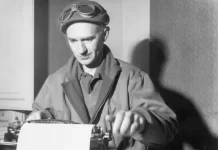USS New Jersey, BB62
USS New Jersey, BB62, the world’s most decorated preserved warship, which has played a role in every American war from World War II until she was decommissioned in 1991, is now a museum and memorial on Camden’s waterfront. Currently, the ship is scheduled to be placed in dry dock in late February for a $10 million overhaul, paint and rehabilitation to enable her to continue as a museum for decades in the future. The date for the ship’s tow from its berth, under the Walt Whitman Bridge, to the dry dock in Philadelphia, will be announced so spectators will have an opportunity to visit spots along the shoreline where they will be able to view her pass. She is expected to be back at her berth and ready to continue to accept visitors on her historic decks in mid-April.
The Battleship New Jersey Museum and Memorial is open seven days a week from 10am. to 5:30 p.m. for tours and visits. For further information, visit the battleship’s website at BattleshipNewJersey.org or get information by writing info@battleshipnewjersey.org.
But during this week 79 years ago, the Battleship New Jersey was fighting her way not only through World War II but also the forces of Mother Nature. It was Dec. 11, 1944, when Admiral William ‘Bull’ Halsey, the Fleet Officer of the Battleship New Jersey, was leading the Third Fleet to Luzon in support of US Army landings on Mindoro Island in the Philippines. The battleship had just spent 85 days at sea, almost always engaged in battle and traveling more than 36,000 miles…..equal to one and a half times around the world.
An airstrike was scheduled for Dec. 19, so the Admiral ordered his fleet to refuel at sea. The weather expert aboard the ship felt the weather, which was unsettled, would not get any worse and Halsey, to ensure even more safety, moved the rendezvous for the ships in the fleet to be refueled by the battleship further south.
But during the 1940s, as it is today, Mother Nature makes decisions, and the Third Fleet sailed directly into the path of Typhoon Cobra. Winds up to 100 knots whirled destroyers through the ocean, ships lost steering control and power, and seas were 70-foot high. On the view from the mighty New Jersey, Admiral Halsey later said, “This typhoon tossed our enormous ship as if it was a canoe…..at broad noon, I couldn’t see the bow of my ship, 350 feet from the bridge.” Concerned for all, he added, “What it was like on a destroyer one-twentieth the New Jersey’s size, I can only imagine.”
Still, with several destroyers dangerously low on fuel, the Admiral ordered refueling to continue.
When the destroyer Spence was trying to refuel, it was rolling so wildly the fuel lines parted, the destroyer almost crashed into New Jersey, and refueling had to be halted. The Admiral ordered the fleet to hold a new course.
That also did not fare well. The fleet remained in the midst of the typhoon for two days during which several light and escort carriers were damaged, planes aboard broke loose starting fires, and in the end 156 planes were destroyed. Spence and two other destroyers capsized and sank. Tragically, 790 men died in Typhoon Cobra. Admiral Chester Nimitz, the Commander in Chief of the US Pacific Fleet, described the damage as representing “a more crippling blow to the Third Fleet that it might be expected to suffer in anything less than a major action.”
New Jersey had lost its float planes but escaped serious damage.



